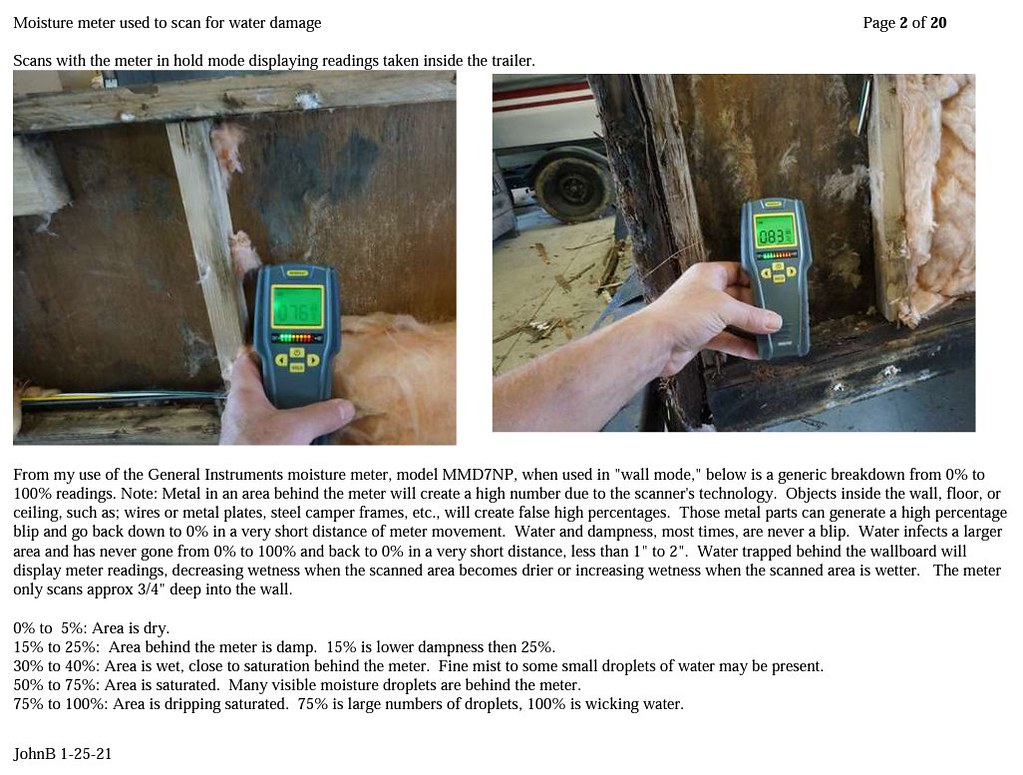A few thoughts for you to check. Do you have any pictures of the front left or right corners of the outside of the camper to show how the front is constructed? The Jay Feather has been made a number of ways over the years and I'm not sure how yours is made. And pics of the under bed storage area?
brainpause wrote:
Snip... I have a 2019 Jayco Jay Feather 27BH. I have front storage (outside access), and storage under the front queen.
There was no wetness on the door side of front storage, but there was in the road side storage door. The trailer is parked on a slope towards that door. Also, and I think this is significant, the floor was perfectly dry on either side of the bed.
I'm hoping this means that it was likely condensation under the bed, and probably condensation on the front storage. I've inspected lights and that chest-high seam on the outside front (between fiberglass and diamond plate). Doesn't appear to have issues there.
I hate water intrusion in my camper!
I restore older water infected campers (8 to 10 year plus range) and I have seen many types of leak paths, here area some places to look.
The front cargo area door seal. This is very suspect even on a 3 year old camper pending how the door latch was installed new or what happened along the way. Does your camper have gutter spout extensions to get the gutter rail water away from the side of the camper?
On the door seal, look for tears in the seal, warped door, door tightness to the seal in the latched position, does the door wiggle when you gently pull on the door latch?
Roof water coming out of the gutter can blast the front cargo area doors running down the wall if the camper is tipped slightly in its favor or the wind can blow the falling water into the door seal area.
Some times if you put a bright light inside the cargo area at night (dark), close the door and then look and wiggle the door, if you see a light path coming out, that is a possible leak path.
Next area is the corner of the camper itself, or a front window if yours has it or a window above the cargo hole area. This is where seeing the construction of the camper helps to guide you on what to look for. Sealant leaks between the corner molding (if yours has it) is notorious for leaking. Or a front molded cap joined to the side walls, or the cargo door frame or window to the camper walls. The camper flexes a lot on the 4 corners and lighter steel frames of the camper flexes making the corner flex worse. That flex can accelerate a leak path into the wall cavity that then comes into the front cargo area. Same on a front wall or front side window frame seal, if you have one.
I have been very successful in finding leaks in walls, cargo doors, ceilings and floors without taking anything part on a camper, using a pinless moisture meter. Sadly, the meter has never failed me, if it shows wet, when I open the wall up, it's wet inside. There is a little learning curve to understanding the sensor, but the meter has never failed me to find a wet wall, floor, ceiling etc. If your camper has fiberglass walls, you can scan from the outside into the wall and you can scan from the inside wall board into the wall. Ceilings, roofs, , shower stalls, the black plastic membrane on the bottom looking up can all be scanned. Metal tricks the sensor, but it is an understood characteristic of the sensor. Aluminum side campers you can't scan the siding, but you can scan the wallboard inside. If you want more on this, let me know.
The under the bed area, I'm "assuming" there is a lift up board top on the bed frame held with gas shocks? are there any drawers or access doors into that compartment, and is this compartment open to the front cargo storage area? Some brands have a wall between the front cargo area and some don't. Is there carpet on the floor in this area? and carpet in the front cargo area? Carpet can wick water from one area to another.
Post some pics of the cargo and under the bed area along with the outside corners etc and we may be able to help more.
Hope this helps,
John
